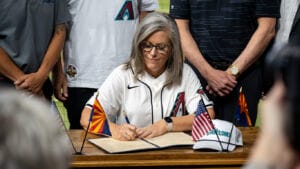If you focus on trying to attract customers in your community or city, local SEO will be your best friend. It can get you from buried in search results to the top dog with users in your area.
LEARN MORE: Read the latest Arizona news here
Local SEO is not just sprinkling keywords here and there; it is part of a much larger approach to making your business stand out, which is where this guide comes in.
Details below.
What is Local SEO?
Local SEO is the process of optimizing your online presence in such a way as to show search engines where your business deserves to be in local searches. Think about it; when someone searches for “coffee shops near me” or “best plumber in City Name,”: businesses optimized for local SEO are the ones who pop up.
It also involves website optimization, creating locally relevant content, and making sure your business is listed in all the relevant directories. We will break it down step by step below.
Benefits of Local SEO
Local SEO gives your business several advantages. Some of these advantages include, but are not limited to:
- Improved visibility: Outshine your competitors and get found by people in your area who mean business when looking for your kind of products or services.
- Higher trust and credibility: Visibility on popular resources such as Google Maps and/or local directories instills trust in local customers.
- Increased foot traffic: For brick-and-mortar locations, Local SEO will drive real-world customer visits from those around you.
- Improved customer engagement-when you optimize locally, you tap into an audience that is more likely to convert since they are searching for options around their area.
Steps to Enhance Your Local SEO
Here’s a step-by-step guide through setting up and optimizing your local SEO.
1. Optimize Your Google Business Profile
First of all, Google Business Profile is key to local SEO. It will help your business appear for local searches-most importantly on Google Maps and within the “Local Pack” (that is, the top three results on Google’s SERP for any local query).
- Claim your profile: If you haven’t claimed your business on GBP, well, that’s a good place to start. Remember to verify it for better trustworthiness.
- Accurate Information: Add your business name, address, telephone number, hours of operation, and link to your website.
- High-Quality Images: Upload several high-quality photos of your storefront, products, or services. Google loves listings featuring clear, quality visuals.
- Run customer reviews: Respond to every review, whether good or bad. Not only does this raise the trust of the customers, but it tells Google that you are active.
2. Optimize Your Website for Local Search
After you have set up GBP, take time out and focus on your website. Your content and technical SEO do go a long way in determining how well you rank for local searches.
- Add location-based keywords: Include your city or neighborhood in your page titles, meta descriptions, and headers. For example, instead of “best hair salon,” have “best hair salon in [your city].”
- Create location-based pages: If you serve more than one location, build different pages for each of those areas with unique information relevant to that particular area.
- Include NAP information: Have your business name, address, and phone number consistent on your entire website; this gains the trust of search engines.
- Embed Google Maps: Showcase a widget of your location in Google Maps on either the contact page or the homepage of your website. This tends to make it easy for users to locate your physical site.
3. Build Local Citations and Backlinks
Citations are mentions of your business on other websites. These may be local directories relevant to your industry or even social media mentions. Backlinks from well-recognized local sources help raise the credibility and ranking of your site.
- List in local directories: Popular ones include Yelp, Yellow Pages, and other industry-specific sites. Ensure your NAP is consistent across the board.
- Collaborate with local influencers or bloggers. This can help you gain valuable local links while spreading the word to a wider audience. You can also add link building packages targeted at obtaining backlinks from high-authority sites within your area.
- Encourage locals for reviews: Ask happy customers to give reviews on GBP, Yelp, and other directories. Reviews build up credibility and increase rankings.
4. Create Locally Relevant Content
Content is the method to reach a local audience. Publishing on topics that pertain to the interests and trends of your area increases your chances of drawing in local traffic.
- Write about local events or news: Such as a bakery blogging about the types of pastry best to bring to some type of community event.
- Customer success stories: Display any testimonials or case studies done with locals. These not only enhance user interaction but also establish trust.
- “Near me” optimization: Phrases like “near me” are used by searchers to find something nearby. Therefore, it is a good practice to incorporate “near me” organically into your copy for the relevant searches that appear.
5. Do Technical Local SEO
Not all local SEO is about content; there are some technical tweaks, too, that make the website not only more accessible but also friendlier to its users.
- Mobile optimization: Most of the local searches are happening on mobile devices. Your website has to be responsive to load fast on smartphones.
- Schema markup: Adding schema markup for local businesses to your website will inform the search engines with more details about your business, such as hours, location, and type of service.
- Check site speed: Faster load times improve user experience and SEO. Make improvements with tools like Google PageSpeed Insights.
Tracking and Monitoring
No SEO strategy would be complete without performance tracking. To monitor local SEO efforts, the implementation of tools like Google Analytics, Google Search Console, and your GBP dashboard can be done.
Track metrics on:
- Organic local traffic: This shows how many visitors come from your area.
- Keyword rankings: Track the ranking of any local keywords-for example, “best restaurant in [city].
- Conversion rate: From contact form submissions to purchases, take note of the local conversions.
Wrapping Up
Local SEO might be a little overwhelming at first, but the merits are undeniable. By increasing your visibility in local search results, you’re positioning yourself for more impressions, new connections in your community, trust, and subsequently higher conversions.
Local SEO is never a one-time thing; it continuously needs optimization and awareness. But with just a little strategy and commitment, your business might just be the favorite in town. Cheers to local success!




